Info
Subfamily: Arundinoideae
Genus etymology: Arundo = "reed" [Latin]
Species etymology: donax = "reed" [Greek] refering to the habit
Photosynthetic type: C3 (cool season)
Nativity: naturalized - intentional
First recorded in Hawaiʻi: 1871
Map
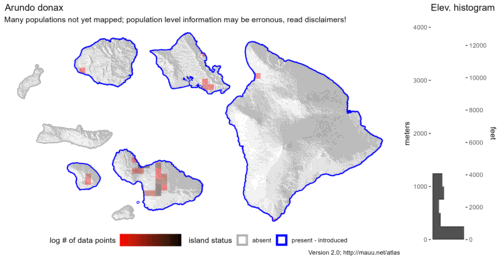
Inflorescence
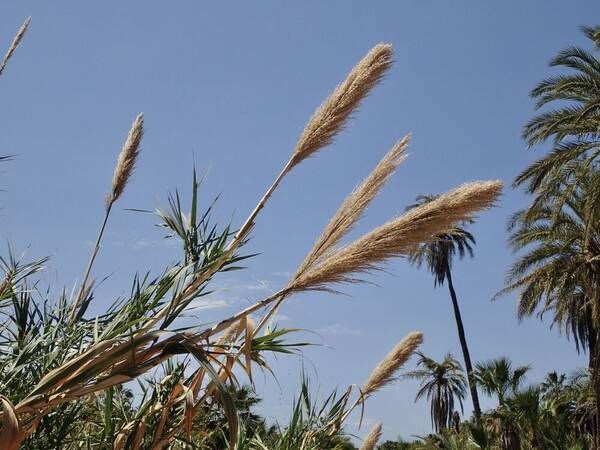 image credit: Sue_Carnahan
image credit: Sue_CarnahanPlant
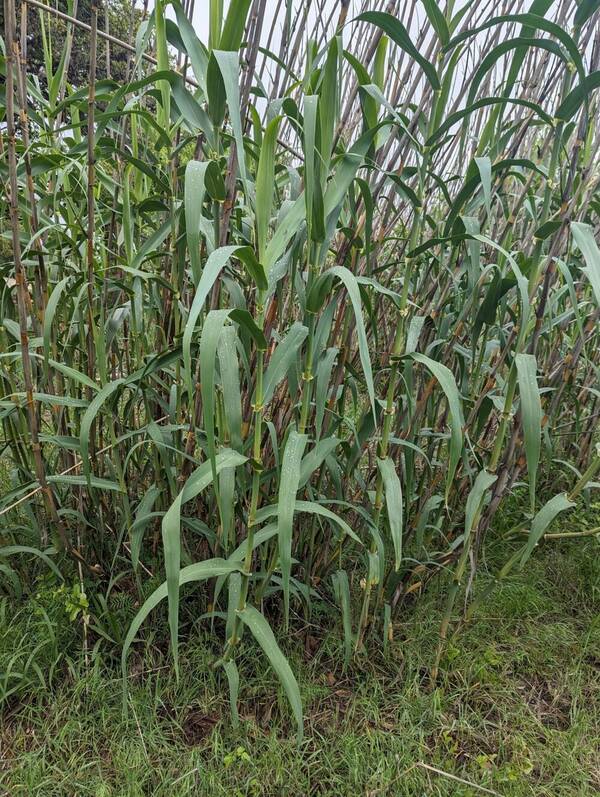 image credit: acartes
image credit: acartes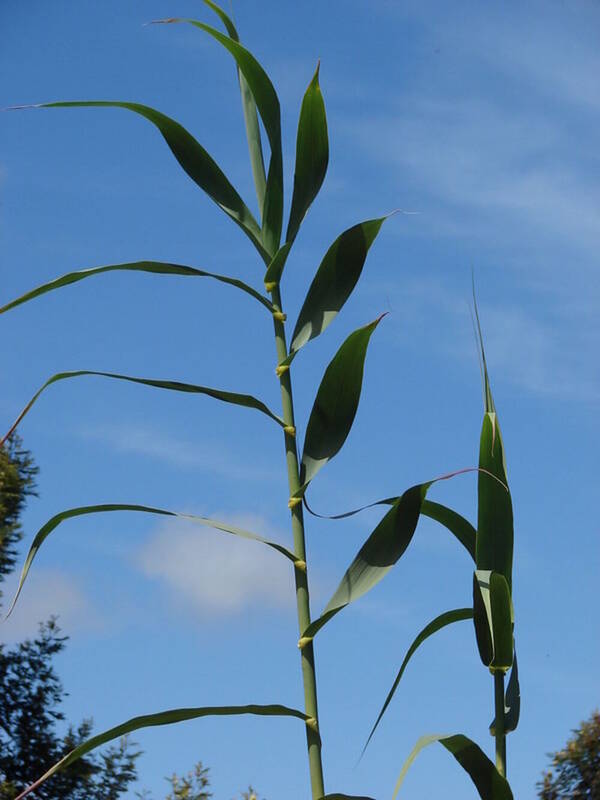 image credit: Forest & Kim Starr
image credit: Forest & Kim StarrHabit
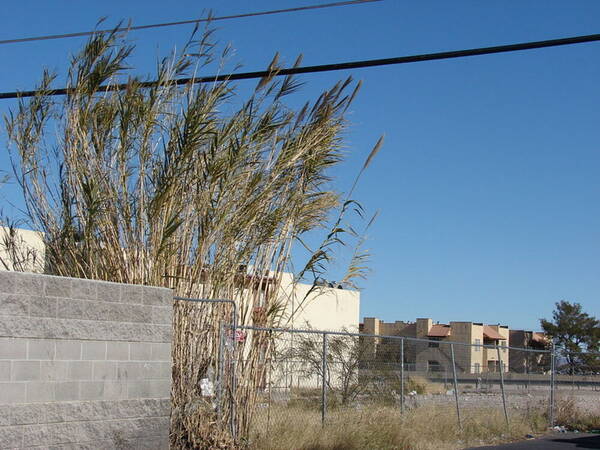 image credit: Forest & Kim Starr
image credit: Forest & Kim StarrLandscape

Collar
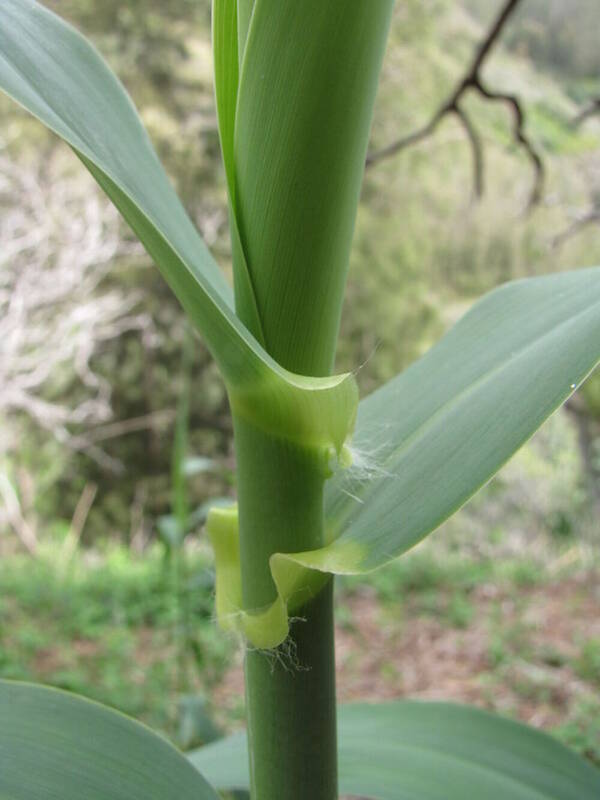 image credit: Forest & Kim Starr
image credit: Forest & Kim StarrDescription
Culms (2)3-10 m, in large tussocks or hedges. Leaves distichous; ligules 0.4-1 mm; blades 30-100 cm long, 2-7(9) cm wide, with a wedge-shaped, light to dark brown area at the base. Panicles 30-60 cm long, to 30 cm wide. Spikelets 10-15 mm, with 2-4 florets. Glumes subequal, as long as the spikelets, thin, brownish or purplish, 3-veined, long-acuminate; lemmas 8-12 mm, 3-5-veined, pilose, hairs 4-9 mm, apices bifid, midvein ending into a delicate awn; paleas 3-5 mm, pilose at the base; anthers 2-3 mm. Caryopses 3-4 mm, oblong, light brown. 2n = 24, 100, 110.
(Description source: Barkworth, M.E., Capels, K.M., Long, S. & Piep, M.B. (eds.) 2003. Flora of North America, north of Mexico. Volume 25. Magnoliophyta: Commelinidae (in part): Poaceae, Part 2. Oxford University Press, New York. 783 pp. http://floranorthamerica.org/Arundo_donax )
Large perennials; culms erect or arching, up to 8 m tall, unbranched or branched above, arising from thick, scaly rhizomes, nodes glabrous, usually concealed, internodes hollow, up to 4 cm in diameter. Leaves strongly distichous, distributed rather uniformly along culm except on old stems; sheaths longer than internodes and strongly overlapping, glaucous, glabrous to sometimes sparsely long-villous at throat; ligule a thin, whitish or brownish, minutely ciliate membrane, 1-1.5 mm long; blades thick and coriaceous, 45-60 cm long, 4-6 cm wide, glabrous, glaucous, striate, margins scabrous, leaf bases broader than sheaths, with prominent, triangular, brownish flanges, ciliate along margins. Inflorescences paniculate, ovoid, 40-70 cm long, plumose, dense, the branches stiffly ascending; spikelets densely clustered along secondary or tertiary branches, 13-17 mm long, 4-5-flowered, rachilla glabrous; glumes hyaline, brownish or purplish, 11- 13 mm long, narrow, acuminate, scabrous on the indistinct keel; lemmas membranous, lanceolate-ovate, 8-15 mm long, tapering to a short straight awn arising between 2 delicate lateral teeth, 3-7-nerved, usually 3 major ones anastomosing with midnerve, lower portions on dorsal surface of lemma heavily bearded with long silky whitish hairs, the hairs 8-10 mm long; palea whitish, membranous, 5-10 mm long, ca. 1/2 as long as lemma, scabrid on keels and pubescent near base between them, hyaline, truncate. Caryopsis elongate, 1- 1.5 mm long. [2n = 60, 64-72, 100, ca. 108, 110.]
(Description source: O’Connor, P.J. 1990. Poaceae, pp. 1481–1604. In: Wagner W.L., Herbst D.R. & Sohmer S.H. (eds.)., Manual of the flowering plant of Hawaiʻi. Vol. 2. University of Hawaii Press & Bishop Museum Press, Honolulu )